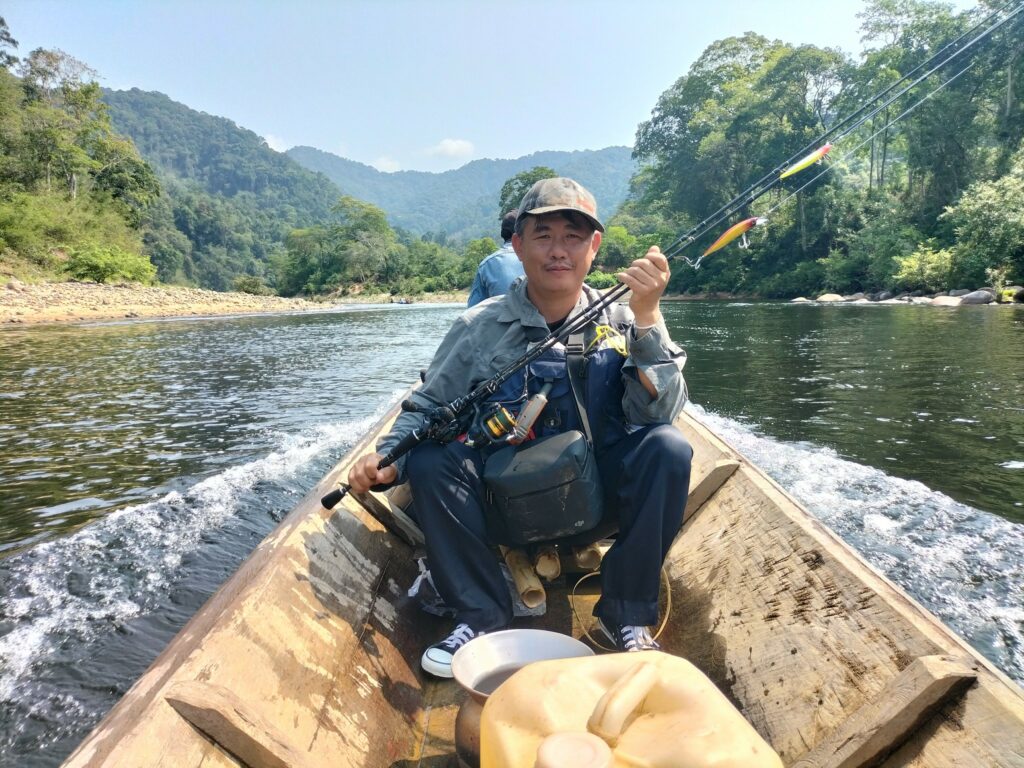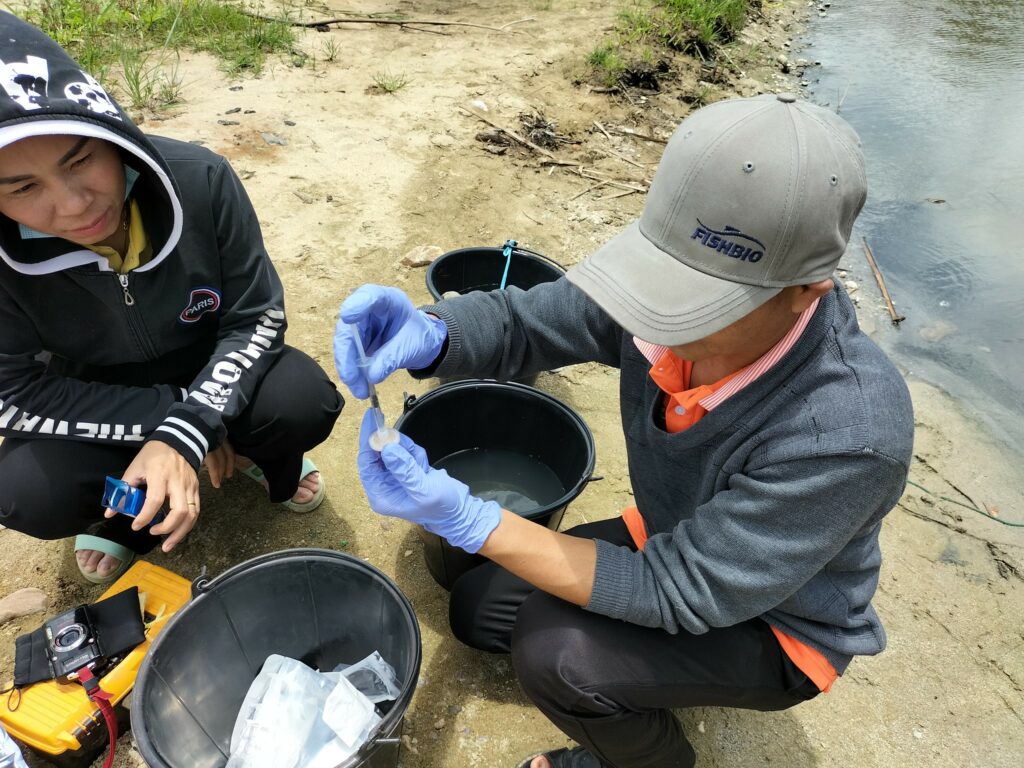


The wolfbarb (Luciocyprinus striolatus) is an endangered fish species found only in parts of Laos and China. This predatory barb can reach lengths in excess of 1.5 meters, and while it is known to inhabit fast-flowing rocky streams, little else is known about its distribution and life cycle. It is also a sought-after target for recreational fishers, which suggests potential for supporting aquatic ecotourism in Laos. In 2021, the Critical Ecosystem Partnership Fund (CEPF) and IUCN Asia Regional Office, serving as the Regional Implementation Team for CEPF, engaged FISHBIO to conduct research on the wolf barb to inform conservation activities. The goal of the project, which was funded through 2023 by a small grant, was to develop scientific knowledge and understanding of the abundance, distribution, life cycle, and threats of this data-poor endangered species in order to better protect its populations in Laos.

The project took place in the Nam Pak and Nam Ou basins of Oudomxay Province in northern Laos, as well as the Nam Kading and Nam Thuen basins of Bolikhamxay and Khammouane provinces in central Laos. Activities included hook-and-line surveys as well as environmental DNA (eDNA) sampling to obtain information on the abundance and distribution of L. striolatus. An inventory of fish habitat and water quality was also conducted across the known species range. FISHBIO staff worked with local communities to document local knowledge about the wolf barb population and threats, and developed plans for local conservation measures, including community-managed Fish Conservation Zones. FISHBIO partnered with several organizations on this project, including Comité de Coopération avec le Laos (CCL), Association Anoulak, and the Nakai-Nam Theun National Park Authority.

In collaboration with partner laboratory Jonah Ventures, FISHBIO staff used tissue samples collected from captured juvenile wolfbarb to develop a qPCR assay for detection of the species via eDNA. Sampling in the field resulted in successful detection of wolfbarb eDNA, as well as the capture of individuals, which were tagged and released in hopes that future recapture may provide insight on survival, movement, and growth. These positive eDNA detections and physical captures have provided an updated understanding of the current distribution of the species throughout the study area, and the assessment of habitat conditions where they were found has yielded insight into potential priority habitats for conservation of this rare species. With input from local communities, FISHBIO has identified the threats that wolfbarb are facing currently, and has developed recommendations for future studies and conservation actions that may be undertaken to ensure the species persists in Laos. For more information, check out the project summary below: